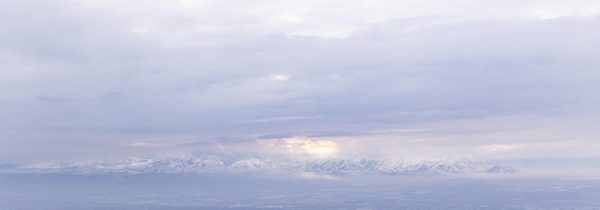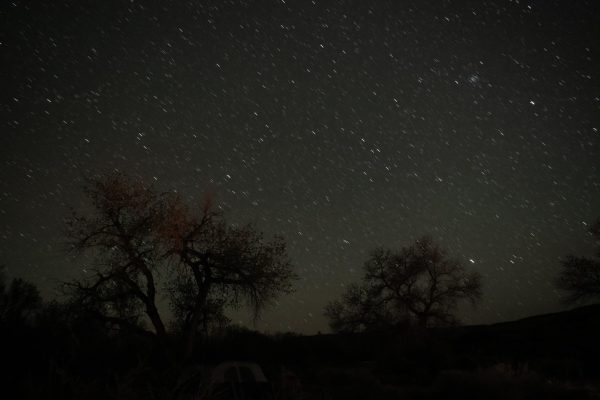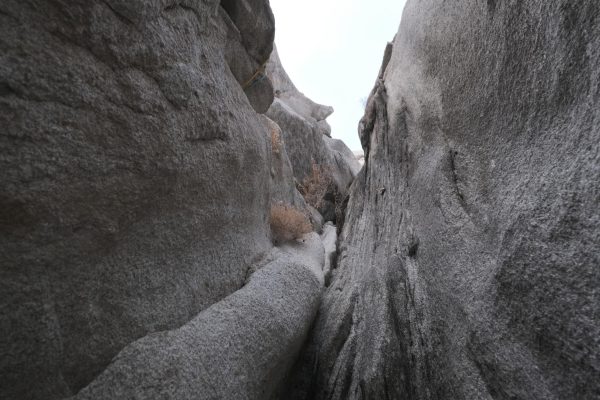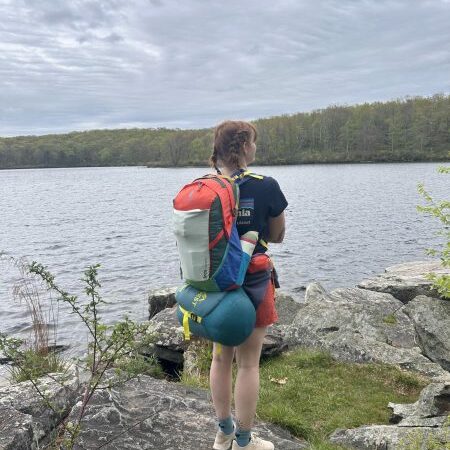Fighting the Winter Blues
Picture if you will – early December 2022, the first big snowfall since I moved to Utah for school. There is a buzz in the air about the upcoming ski season and I, a snowboarder, am equally as excited. I figured I wouldn’t get a season pass since I lived in the dorms and didn’t own a car; I’d just buy a couple of day passes whenever I had a friend going up. But when the time came, I looked at the price of a ticket and the traffic up LCC. . . I realized I wouldn’t be boarding that season.
Whether it was the price, the effort, or just lack of motivation, I haven’t snowboarded since I moved here. Ironically, I snowboarded more back home than I have in the state whose license plate says, “Greatest Snow on Earth.”
Since then, I’ve sort of just suffered through the winter. Longing for the warmer months where I feel freer. Not bound by three layers and a puffy. No need to turn on my car for ten minutes before I have to leave. As a climber, the snow merely brings short days and prohibits me from bouldering in the canyon. I have gotten used to just hunching over my computer, focusing on school, and waiting for the sun to come back. I’ve started to realize I may be suffering from seasonal depression, or something like it. Talking with peers, it seems that a lot of people (mainly those who don’t ski) are affected by it.
Seasonal affective disorder (SAD), more commonly known as seasonal depression, is a type of depression that most commonly occurs at the end of fall and into early spring. According to Johns Hopkins Medicine, there isn’t a clear cause of seasonal depression, but it is most heavily linked to shorter days and less sun. Usually starting in adulthood and worsening with age, seasonal depression can be very common in places like Utah.
While some sources suggest light therapy or antidepressants, I wish to offer a different, outdoor oriented approach (this being an outdoor magazine and all).
Experts at the Mayo Clinic suggest good treatments for seasonal depression are to get outside, exercise regularly, maintain a schedule, and stay connected with those around you.
Importantly, none of this is sound medical advice, but rather information I’ve gathered from clinics and those around me who also feel the effects of SAD.
Sports in the Outdoors
The cure for SAD seems to be well obtained with outdoor activities. Or if the weather doesn’t allow it – outdoor adjacent activities.
As a climber I am naturally biased, but indoor climbing is a great way to stay warm while combating SAD in all the ways listed above. It offers a great workout and community while still being outdoor oriented. Even better, as it slowly begins to warm up come spring, you can take your skills to real rock all around the state! With many gyms in Salt Lake, it isn’t hard to find one near you. Plus, most offer a discount if you go to the U.
If you’re willing to brave a bit more cold, bundling up and going for a winter walk or run is a great excuse to get outside and get moving. Even if the trails have iced over, parks such as Liberty and Sugarhouse offer paved, dirt, or woodchip trails that are well maintained through the winter.
Furthermore, numerous trails around Salt Lake are still hikeable in the winter, and many offer a very different experience than they did months prior. For instance, Grandeur Peak and the Living Room, though rather treacherous at points, are walkable all year round.
I think it is important, especially during the winter, to be goal oriented. Ticking off boxes and working towards something can keep me more motivated. With climbing I have a lot of highly specific goals that feel a lot more achievable during the winter because I’m less distracted by outdoor projects and can focus on the bleaker things like hangboarding and weight training. This same concept can be applied to any other sport through the winter. In general, if there’s a hobby you’ve been meaning to get into but still haven’t tried, winter may be the perfect time to do it.

A Nice Day is a Good Enough Excuse
Maybe the most important goal to achieve, also happens to be the easiest. Just going outside. I struggle with this in the winter more than I’d like to admit. A combination of the cold dreary conditions, and the thought that I ought to be productive, usually keeps me indoors. But getting fresh air and sunlight is so crucial. More personally, taking a break and moving around is vital to me staying focused on anything.
I don’t speak for your boss, teacher, or parent. But if the sun is out, or the day is nice, that is a perfectly good reason to stop what you’re doing and go outside. Whether that is for five minutes or five hours, take advantage of those days when they come around – they’re rather rare in the winter. Fresh air, sun, and just moving your body are all going to help ease seasonal depression symptoms, and are all free to do right outside your door.
This is something I’ve learned from my first couple winters in Utah. If you’re cramming for a midterm or a deadline, and you’ve been stuck inside for what seems like an eternity, taking a walk is a valid and productive way to spend your time, and will help you in the long run.
Group Activities Ideas
Another fun way to stay connected with one another and the outdoors this winter is through the Liberty Park Aviary, and our Hogle Zoo. I was surprised to find that even in January the Aviary was still bustling with birds – and not a lot of people. If you’re willing to pay ten dollars, and be a little cold, the aviary offers a very unique experience. It puts on daily bird shows for no extra charge, and for five dollars you can feed some birds! I highly recommend grabbing your friends and giving it a try. Most birds stay outside through the winter, and those that go inside can often still be seen. Much like the Aviary, Hogle Zoo stays open through winter, and cuts back on the crowds. Better yet, if you’re lucky you may witness some of the animals playing in the snow; animals like mountain lions, polar bears, and even elephants stay outside all winter.
It seems no matter how many times the winter rolls around, its bitter cold and minuscule days hit just as harshly as they did last year. Like waking up too early, I always anticipate it’ll be easier, though it never is. But as I grow, I do learn how to better handle it, how to continue to be motivated by internal goals and the knowledge of spring.
I appreciate articles that I can really take something away from, and so if you made it this far, feel free to tear out this page (after you finish the magazine of course), hang it up on your fridge and start ticking off some winter goals! Let me know how it goes, I know I’ll be doing the same.
WINTER TICK LIST!!
- Get Outside 3 days a week for however long you feel fit
- Go to the Hogle zoo
- Bonus tick if you see an animal playing in the snow
- Go to the aviary
- Bonus tick if you go to a bird show
- Go for a hike
- Go for a walk in the park
- Build a snowman
- Sled down your driveway
- Call a friend
- Go grab a snack with someone
- Close your laptop and go walk around the block
- Jump in the snow
- Sun bath (In whatever sun there is)
- Make a snow angel
- Pick up a hobby
- Bonus tick if you stuck to it, at least for a little
- Set a goal
- Bonus tick if you started working towards it
- Bonus tick if you achieved it
- Start a new book
- Bonus tick if you finished it
The post Fighting the Winter Blues appeared first on Wasatch Magazine.






